Previewing the seven local by-elections of 3rd July 2025
"All the right votes, but not necessarily in the right order"
Seven by-elections on 3rd July 2025, with the Conservatives defending three seats and the Lib Dems and and Reform UK two each. Let's start with the RUK defences:
Benfieldside
Durham council; caused by the disqualification of Reform UK councillor Andrew Kilburn.
We are now 52 weeks on from the general election which brought the Labour party to power nationally, and in the last year Andrew's Previews has brought you over 100 council by-elections which were triggered by newly-elected MPs, mostly Labour, resigning their previous council seats. (There are more of these to come, as we shall see next week in Woking.) We are also now two months on from the May 2025 local elections which, like July 2024, saw a massive turnover in our elected representatives: on this occasion, that was due to the rise of Reform UK. Not all newly-elected councillors will have seriously expected to win, and enough time has now elapsed for councillors unexpectedly elected in May to resign their seats and for the by-elections to replace them to be organised.
Our first two of today's seven by-elections are triggered by Reform UK councillors from the Class of 2025. One of them was Andrew Kilburn, who was elected to Durham council as one of the two representatives for Benfieldside ward. Kilburn works for Durham council, and for that reason he was not eligible to stand in the 2025 Durham council elections. This is the sort of embarrassing and expensive vetting failure which gets you no sympathy from this column: it's not as if the party were having to make a judgment call on the quality of their candidate, this is a simple failure by both the candidate and the agent to read the rules. Whichever Reform UK official signed off on Kilburn's candidacy has some awkward questions to answer.
Benfieldside ward covers a number of villages which have fused together to form a northern suburb of Consett; the ward name comes from a former urban district which was merged with Consett in 1937. The largest of these villages is Shotley Bridge, the home town of the former England cricketer Paul Collingwood, which is named after a bridge over the River Derwent which here forms the boundary between County Durham and Northumberland.
Shotley Bridge was built on coal, iron ore and limestone, which are the ingredients required for steel-making. And this was recognised as far back as the early 17th century, when a group of cutlers and swordmakers moved here from Germany to escape religious persecution and turned Shotley Bridge into the centre of the UK's swordmaking industry. The Oleys, one of the swordmaking families, were part of the group of businessmen which set up the Consett Iron Company in the 1840s to turn Consett into one of England's major steelworking towns. Those days, of course, are long gone. Shotley Bridge hospital, which was once one of the largest hospitals in County Durham, has been downgraded to a community hospital in this century and possible further service cuts are an issue in this by-election.
Local government here has been run from Durham since Derwentside, the second-tier district based on Consett, was abolished in 2009. That reorganisation had left Durham council as one of the UK's largest elected bodies, with 126 councillors up for election in 2021: only the House of Commons and the Scottish Parliament were larger. That 2021 election also saw Labour lose control of Durham county council after a century of unbroken rule: Labour remained the largest party with 53 seats, but an anti-Labour coalition was set up under a Lib Dem leader.
From 1983 Consett was the major town in the North West Durham parliamentary seat, which in the 1992 general election was contested by two future party leaders: the Labour MP Hilary Armstrong was easily re-elected against competition from a 35-year old Theresa May and a 21-year-old Tim Farron. It took until 2019 for the Conservatives to break through, as socialist firebrand Laura Pidcock lost her seat to Richard Holden in what was seen at the time as an embarrassing result for Durham Labour.
Boundary changes for the 2024 general election then merged Richard Holden's seat with the Labour-held Blaydon constituency and notionally wiped out the Conservative majority. Holden, who was the Conservative party chairman going into the 2024 election and thus ultimately responsible for candidate selection, eventually did the chicken run to Essex and left the field open for the outgoing Blaydon MP Liz Twist, who was easily elected as the first MP for Blaydon and Consett. Reform UK came second in that election.
Since the creation of the modern Durham council Benfieldside has been one of the county's weaker wards for Labour. This was due to the presence of the Derwentside Independents, who had vied with Labour for control of the old Derwentside council and continued to contest local elections after that body was abolished in 2009. It took until 2021 for Labour to win here, when Benfieldside ward's two seats split between Labour's Kevin Earley and the Derwentside Independents' Stephen Robinson.
Boundary changes for the 2025 election expanded Benfielside ward to take in all of Blackhill, which had previously been split between this ward and Consett North. This was one of the many seats in Durham which fell to Reform UK, whose slate won both seats in Benfieldside ward with 32% of the vote against 27% for Labour, 24% for the former Derwentside Independents slate now standing as independents without further qualification, and 11% for the Lib Dems. Overall, the 2025 Durham council elections returned 65 Reform UK councillors against 14 Lib Dems, 12 independents, just four Labour councillors, 2 Greens and 1 Conservative.
Because Reform UK fielded an ineligible candidate who got elected in Benfieldside, the voters here are going straight back to the polls. Defending for Reform UK is Stephen Harrison, a long-serving prison officer who contested Lanchester and Burnhope division in May. Former Labour councillor Kevin Earley, who lost his seat here in May, wants it back. Also in that position is independent candidate Stephen Robinson, who is a former long-serving Derwentside Independents councillor for this ward. Yet another returning candidate from May is the Lib Dems' Terry Rooney, whose wife Kathryn was re-elected in May as the Durham councillor for the neighbouring Consett North ward. The Conservatives' David Lowes and the Greens' Richard Simpson complete an all-male ballot paper - there are a few of those this week - of six candidates.
Parliamentary constituency: Blaydon and Consett
ONS Travel to Work Area: Newcastle
Postcode district: DH8
Kevin Earley (Lab)
Stephen Harrison (RUK)
David Lowes (C)
Stephen Robinson (Ind)
Terry Rooney (LD)
Richard Simpson (Grn)
May 2025 result RUK 1064/1007 Lab 879/613 Ind 783/646 LD 362/278 C 216/215
Previous results in detail
Newark West
Nottinghamshire county council; caused by the resignation of Reform UK councillor Desmond Clarke.
Our second Reform UK defence of the week comes in the Nottinghamshire town of Newark-on-Trent. Despite what the compass point might say, Newark West division is actually the south of the town: it's a mostly residential area with a large proportion of social housing. The division boundaries include Newark Hospital and the Magnus Church of England Academy, a secondary school and sixth-form named after Thomas Magnus, a diplomat and cleric who originally founded the school in the 16th century. The River Devon (pronounced DEE-von) flows along the division boundary to join the Trent here, and next to the river is the Sconce and Devon Park. In military parlance a sconce is a small earthwork fortification which is used to protect artillery, and the park includes the Queen's Sconce which is a surviving relic of Newark's Civil War defences.
Newark was enfranchised as a parliamentary borough in 1673, in recognition of the town's Royalist sympathies during the Civil War, making it the last new borough to be created before the First Reform Act of 1832. Since 1885 the Newark constituency has been a county division of Nottinghamshire, and its last three MPs have all been controversial or high-profile figures. Fiona Jones, who was elected as the seat's Labour MP in the 1997 landslide, was expelled from the Commons in 1999 after being convicted of overspending on her election campaign, but was then reinstated as an MP after the Court of Appeal quashed that conviction. She lost her seat in 2001 - one of the few Tory gains at that election - to the Conservatives' Patrick Mercer, a journalist and former Army officer.
Mercer was forced to resign from the Commons in 2014 in a cash-for-questions scandal; under today's rules, he would have had a recall petition opened on him had he not resigned. The resulting by-election was held for the Conservatives by Robert Jenrick, who became the first Conservative candidate to successfully defend a Parliamentary by-election while the party was in government since William Hague in 1989. Jenrick served in Boris Johnson's first Cabinet with the housing and local government portfolio: he finished second to Kemi Badenoch in the 2024 Conservative leadership election, and he is now shadow justice secretary in her Shadow Cabinet.
The local authority here is Newark and Sherwood council, which has rather different boundaries to the parliamentary seat in that it includes a large chunk of the Nottinghamshire coalfield. The Conservatives lost control of this council in the 2023 election, which finished with 14 Conservative councillors, 11 Labour, 11 independents and 3 Lib Dems. Labour initially formed a minority administration, although following some defections this is now a Labour-Green coalition.
In Newark and Sherwood council elections most of Newark West division is covered by Devon ward, named after the river, which has swung steadily to the left over the last decade: Devon ward returned a full slate of Conservative councillors in 2015, but in 2023 the three seats went to an independent and two Labour candidates. The county division also includes part of Beacon ward, which returned a full slate of three independents in 2023, and a small corner of Balderton North and Coddington ward which has a Conservative and an independent councillor. Overall this division would clearly have been carried by independents in the 2023 elections.
The current division boundaries date from 2017, when Newark West was an easy win for the Conservatives' Keith Girling: he was first elected for Newark West on previous boundaries in 2005, stood down in 2013 and returned in 2017. In the 2025 county elections Girling lost his seat to Reform UK's Desmond Clarke, who won with 36% of the vote against 30% for the Conservatives and 20% for Labour. Clarke then resigned just a week after his election, with the local Reform UK branch putting out a statement referring to significant recent changes to his personal circumstances.
We have already covered Nottinghamshire county council once since the election, after the poll in Mansfield North had to be postponed following the death of a candidate. Reform UK ended up winning both seats in that ward, which puts them on 41 seats plus this vacancy against 17 Conservatives, 4 Labour and 3 independents or localists. Following this by-election, Nottinghamshire county council will have its full complement of 66 councillors for the first time since May.
Defending this seat for Reform UK is Caroline Hinds, a former primary school teacher who stood in May for the neighbouring Farndon and Trent division, which is where she lives. The Conservatives' former county councillor Keith Girling wants his seat back. Also returning from May's election is Labour candidate Paul Taylor, who is one of the district councillors for Devon ward. Taylor's fellow ward councillor Matthew Spoors, who was elected in 2023 for Labour, is also standing under his new Green colours; he completes the ballot paper along with Rosemary Johnson Sabine for the Lib Dems and Andrew Leatherland for the Social Democratic Party.
Parliamentary constituency: Newark
Newark and Sherwood council wards: Devon, Beacon (part), Balderton North and Coddington (small part)
ONS Travel to Work Area: Lincoln
Postcode district: NG24
Keith Girling (C)
Caroline Hinds (RUK)
Rosemary Johnson Sabine (LD)
Andrew Leatherland (SDP)
Matthew Spoors (Grn)
Paul Taylor (Lab)
May 2025 result RUK 909 C 756 Lab 508 Grn 193 LD 164
May 2021 result C 1235 Lab 800 Grn 219 Ind 172 LD 170
May 2017 result C 1412 Lab 933
Previous results in detail
Calverton
Gedling council, Nottinghamshire; caused by the death of Conservative councillor Lorraine Brown.
Staying in Nottinghamshire for the time being, we now move west of Newark to the village of Calverton. This was an old textile village which boomed in population in the 1950s, with the opening of Calverton Colliery in 1952: this was the first new pit opened by the National Coal Board. The colliery closed in 1993 but was briefly reopened from 1994 to 1999, extracting more than 31.5 million tons of coal in total. The old pithead site has now been landscaped, but mining is still a major part of the local economy with Lafarge Tarmac operating a quarry here for sand and gravel. The ward boundary also extends to the A60 road to the west, and so it includes the Nottinghamshire Police headquarters at Sherwood Lodge.
With the demise of mining here, Calverton's local politics has changed as the area has developed for Nottingham commuters. In the 2000s elections here were fought between Labour and a localist group called Calverton First, but in 2015 - the first contest on the current boundaries - the Conservatives broke though to win all three seats. Two seats went to independent candidates in 2019, but the Tories got them back in 2023 when vote shares were 50% for the Conservatives, 29% for Labour and 21% for independent candidates. This puts Calverton in the opposition group on Gedling council, which is based on the Nottingham suburbs of Arnold and Carlton and has a Labour majority.
The Conservative score here in 2023 was inflated by a large personal vote for Boyd Elliott, who was Calverton's county councillor from 2013 to 2025. He took that seat over from Mark Spencer, who went on to greater things after being elected as the Conservative MP for Sherwood in 2010. Spencer served in Cabinet throughout the Johnson administration, with a long spell as chief whip followed by seven months as Leader of the Commons; he was reshuffled out of that position by Truss just two days before the death of Elizabeth II, costing him the opportunity to preside over the Accession Council which proclaimed Charles III as the new monarch. He lost his seat in 2024 to Labour's Michelle Welsh, who gained the renamed constituency of Sherwood Forest. Welsh stood down from her previous posts on Gedling council and Nottinghamshire county council in May, when Conservative county councillor Boyd Elliott lost the Calverton county seat to Reform UK; in fact he finished third behind independent candidate Andy Meads and RUK's Jody Stoll.
By then the Conservatives knew they had a by-election to defend in Calverton, following the death in April of Lorraine Brown who had served the ward since 2023. Before becoming a councillor Brown had worked for Gedling council for 25 years, including several years as the council's events coordinator.
Defending this by-election for the Conservatives is Izzy Corbally. Labour have selected Aimee Kimmpton, who gives an address in the ward: in May's county elections Kimpton contested Hucknall North without success. The independent challenge is led by Andy Meads, a Calverton parish councillor who was runner-up here in May's county elections. Also on the ballot are Andrew Davies for the Lib Dems, Oscar Power for the Greens and Keith Walters (who stood in Cotgrave division in May) for Reform UK.
Parliamentary constituency: Sherwood Forest
Nottinghamshire county council division: Calverton (most), Newstead (western fringe)
ONS Travel to Work Area: Nottingham (Calverton parish and part of Woodborough parish), Mansfield (unparished area)
Postcode districts: NG5, NG14, NG15
Izzy Corbally (C)
Andrew Davies (LD)
Aimee Kimpton (Lab)
Andy Meads (Ind)
Oscar Power (Grn)
Keith Walters (RUK)
May 2023 result C 1075/750/711 Lab 611/458/308 Ind 450/377/352/313
May 2019 result Ind 860/809/729 C 843/649/612 Lab 439/429/386 UKIP 333
May 2015 result C 1610/1432/1357 Lab 1246/1162/1112 UKIP 706/683/662 Ind 348
Previous results in detail
Llanidloes
Powys council, Wales; caused by the resignation of Liberal Democrat councillor Gareth Morgan.
Our first Liberal Democrat defence of the week comes in mid-Wales. With a population of around 3,000, Llanidloes is one of the small market towns in which mid-Wales specialises, and it's actually the third-largest settlement in Montgomeryshire after Newtown and Welshpool. The town was an independent borough up to the reorganisation of 1974, and until 1918 it was one of the five towns included in the Montgomery Boroughs parliamentary seat. Llanidloes is the highest town in the Severn valley, through which the A470 road runs bypassing the town on its meandering route from Cardiff to Llandudno.
The town's prosperity was based on lead-mining, but most of the lead mines were actually in the surrounding countryside: for example, the Bryntail lead mine lies in the Clywedog valley to the west of Llanidloes, just below the Llyn Clywedog dam. This is the UK's tallest concrete dam, at 72 metres high. Until recently this countryside formed a separate ward called Blaen Hafren which entirely surrounded Llanidloes ward, but the two wards were merged in 2022 to form a single ward with two councillors. Before the boundary changes Blaen Hafren was Wales' largest electoral ward by acreage: the new Llanidloes is a bit smaller but still extends west all the way to the mountain of Plynlimon which is the source not only of the River Severn but also of the River Wye. On the clearest of days, the Staffordshire Roaches and the Wicklow Mountains can be seen from Plynlimon's summit (link).
The Wye runs south-east from Plynlimon to Llangurig, a small village which is signed as a primary route destination for miles around thanks to its location at the junction of roads from Aberystwyth, Llanidloes and Rhayader. The infant Severn runs eastwards through the scenic Hafren Forest to Llanidloes, where it is joined by the Clywedog. All this is prime territory for wildlife and particularly for birds of prey: Powys council uses a drawing of a red kite as its logo, and a webcam has been set up at an osprey nest near Llyn Clywedog. Do checkout CarnyxWild on YouTube (link) for live coverage of ospreys.
This by-election marks the end of a political era with the retirement of Gareth Morgan, who had been the county councillor for Llanidloes continuously since the first election to the old Powys county council in 1973. Morgan was originally a Liberal councillor and he was normally elected under the banner of the Liberals or their successor parties, although he was re-elected as an independent in 2008 and 2012 before rejoining the Lib Dems. Even now, after 52 years in office, Morgan hasn't quite left politics yet: he's staying on as a Llanidloes town councillor.
Gareth Morgan was 86 when he was re-elected for his thirteenth and final term of office in 2022, making him the oldest member of Powys council; while his Lib Dem running-mate Glyn Preston was the youngest member of the council when he was first elected that year at the age of 22. Morgan and Preston were elected at the top of a rather fragmented result, with 32% for the Lib Dem slate, 27% for an independent candidate, 16% for the Conservatives and 13% for Plaid Cymru, whose lead candidate just beat Labour.
The 2022 Llanidloes election result comes out at 4.34 on the metric of "effective number of parties", which is used by political scientists to measure the diversity or fragmentation of election results. (To calculate the effective number of parties, calculate each party or candidate's share of the vote as a fraction between 0 and 1, square all those fractions, add the squares together and take the reciprocal of the sum. A larger number means more fragmentation.) On this metric, the 2024 Westminster election result in the Montgomeryshire and Glyndŵr constituency which covers Llanidloes is the most fragmented general election result ever seen, at 4.95 parties: shares of the vote there were 29% for the winning Labour candidate, 21% for Reform UK, 18% for the outgoing Conservative MP Craig Williams who had been disendorsed by the party due to a scandal over betting on the general election date, 15% for the Lib Dems and 13% for Plaid Cymru.
Montgomeryshire's Conservative MS Russell George has also been caught up in that betting scandal. George and former MP Craig Williams were both among fifteen people who appeared before Westminster magistrates last month charged with gambling offences, with George pleading not guilty and Williams not entering a plea. George has been suspended from the Conservative whip, and he will not seek re-election to the Senedd next year - at which point Llanidloes will become part of a new constituency called Gwynedd Maldwyn, electing six MSs by proportional representation.
Before then the Powys returning officer has the Llanidloes by-election to organise. Defending for the Lib Dems is Fleur Frantz-Morgans, who is an IT systems administrator. The runner-up here last time was independent Graham Jones, who was previously a Conservative councillor for Blaen Hafren ward from 2012 to 2017: Jones is standing in this by-election with the Reform UK nomination, and he is in the unusual position for a J of bottom of the ballot paper. The Conservatives have reselected Phylip Davies, who placed fourth here in 2022; Davies was previously the councillor for Blaen Hafren ward from 2017 to 2022 and served as Powys' cabinet member for education. Plaid Cymru have selected Victoria Evans, who runs a bookkeeping and accountancy firm in Llanidloes. Also standing are Llanidloes town councillor Trudy Davies for Labour and independent candidate David Campbell. This is a Welsh local election, so Votes at 16 apply and intending Conservative and Labour voters should check carefully which Davies they are voting for.
Westminster constituency: Montgomeryshire and Glyndŵr
Senedd constituency: Montgomeryshire
Senedd constituency from 2026: Gwynedd Maldwyn
ONS Travel to Work Area: Newtown and Welshpool
Postcode district: SY18
David Campbell (Ind)
Phylip Davies (C)
Trudy Davies (Lab)
Victoria Evans (PC)
Fleur Frantz-Morgans (LD)
Graham Jones (Ind)
May 2022 result LD 706/605 Ind 589/42 C 355 PC 290/205 Lab 279
Previous results in detail
Tower
Suffolk county council; caused by the death of Conservative councillor Robert Everitt.
Travelling east from the middle of Wales, we come to the middle of East Anglia and to the town of Bury St Edmunds. This is an ancient town which was originally known to the Anglo-Saxons as Beodericsworth, until the remains of St Edmund were moved here around 925 leading to a change of name to St Edmund's Bury. Edmund had reigned as king of East Anglia from around 855 until he was killed by the Viking invaders of the Great Heathen Army in 869; by 925 he was already venerated as a martyr. Under the patronage successively of Canute, Edward the Confessor, the Norman invaders and innumerable pilgrims, Bury St Edmunds Abbey - home of Edmund's shrine - went from strength to strength to become of Europe's largest churches, and the town around it boomed.
The Abbey was mostly destroyed at the Dissolution, but its large gatehouse has survived the last nine centuries almost intact. The Norman Tower, as it is called, became the belltower of St James' church within the old Abbey precincts, because that church originally had no tower of its own. In 1914 St James' church was promoted to become St Edmundsbury Cathedral, within the diocese of St Edmundsbury and Ipswich; over the 111 years since a lot of expansion work has taken place on the cathedral church, most notably the addition of its own tower in the Gothic Revival style. This was completed in 2005 and stands 46 metres tall.
The Norman Tower gives its name to the Tower division of Suffolk county council, which covers half of Bury St Edmunds: specifically, most of the town centre and a number of estates in the north and west of the town are here. The division boundaries include the large Greene King brewery, the town's railway station and the offices of West Suffolk council, which has been the local authority here since St Edmundsbury council merged with Forest Heath district in 2019. In the west of the town we find Blenheim Camp, the headquarters of the Royal Anglian Regiment. This is descended from the Suffolk Regiment, which was one of the six regiments of foot that fought at the 1759 Battle of Minden, a British military victory of the Seven Years' War; so it's a nice touch that the West Suffolk council ward covering this part of western Bury is called Minden.
The current boundaries of Tower division have been unchanged since 2005, after COVID-related delays meant that a boundary review intended for the 2021 election missed the deadline. In 2005 the two seats in Tower split between Labour and the Conservatives, but Labour came nowhere near defending their seat in 2009 when the Conservatives and the Green Party split the seats. The Conservative councillor resigned the following year and the Tories narrowly held the resulting by-election in November 2010, finishing 55 votes ahead of independent candidate David Nettleton. Nettleton was back for the 2013 election, when he gained the Conservative seat.
In 2017 the Conservatives got their Tower seat back, with Robert Everitt topping the poll and David Nettleton winning the second seat; Nettleton was re-elected five votes ahead of fellow independent Paul Hopfensperger, who had previously been the Conservative councillor here in 2005-09 and is apparently notable enough for Wikipedia. Everitt and Nettleton were re-elected in 2021, but this time they were on the same slate as Nettleton had the Conservative nomination; the Conservative candidates polled 34% of the vote against 29% for the Green Party and 21% for Labour.
Elections since then have told a rather different story. In the 2023 West Suffolk council elections Labour would clearly have carried this area, with the four wards roughly corresponding to Tower division returning a total of 5 Labour councillors, one Conservative and one Green (both in the town-centre Abbeygate ward) and an independent (in St Olaves ward on the northern fringe of the town). West Suffolk council is hung, with the Conservatives as the largest party but with Labour leading a "progressive alliance" rainbow coalition. Labour then followed up on that by winning the Bury St Edmunds and Stowmarket seat in the 2024 general election, with Peter Prinsley defeating Rishi Sunak's chief of staff Will Tanner. The 2025 Suffolk county council elections have been postponed to 2026, pending local government reorganisation.
This postponement means that the Conservatives have a by-election to defend, following the death of councillor Robert Everitt in April at the age of 72. Everitt had started his political career in 1981 on Wickhambrook parish council; in 2003 he was elected to St Edmundsbury council, and he served on that council and its successor West Suffolk until he lost his seat to Labour in 2023. As stated, Everitt had been a Suffolk county councillor since 2017 and he was chairman of the county council in 2022-23; he had also served as mayor of St Edmundsbury, and as that council's cabinet member for families and communities.
Defending this difficult seat for the Conservatives is Jo Rayner, who is a West Suffolk councillor for Abbeygate ward which is part of this division; she is a manager at West Suffolk hospital in the south of the town. The Green Party have selected Clare Higson, who appears to be fighting her first election campaign. Labour's Judith Moore is the secretary of the party's local branch and she was an unsuccessful candidate for West Suffolk council in 2023. Also standing are independent candidate Frank Stennett, who is a West Suffolk councillor for St Olaves ward and polled 10% here in 2023, James Porter of the Lib Dems and Martin Robinson of Reform UK.
Parliamentary constituency: Bury St Edmunds and Stowmarket
West Suffolk wards: Abbeygate, Minden, St Olaves, Tollgate, Westgate (part)
ONS Travel to Work Area: Bury St Edmunds
Postcode districts: IP32, IP33
Clare Higson (Grn)
Judith Moore (Lab)
James Porter (LD)
Jo Rayner (C)
Martin Robinson (RUK)
Frank Stennett (Ind)
May 2021 result C 2277/2104 Grn 1993/1489 Lab 1409/830 Ind 691 LD 269 Communist 120
May 2017 result C 1833 Ind 1628/1623 Grn 1406 Lab 998/907 LD 509/173
May 2013 result Grn 1481 Ind 1389 C 1227/1997 UKIP 983/823 Lab 895/840 LD 399
November 2010 by-election C 1005 Ind 950 Lab 759 Grn 479 LD 300
June 2009 result C 2042/1726 Grn 1924 Lab 645/624 LD 641/605
May 2005 result Lab 3183/2720 C 2747/2663 LD 1738/1266 UKIP 801/509 Ind 799/498 Grn 455/432
Previous results in detail
Fulham Town
Hammersmith and Fulham council, London; caused by the resignation of Conservative councillor Andrew Dinsmore.
Our London poll this week is in an increasingly rare type of location: an inner London ward which votes Conservative. Fulham is one of the most iconic London suburbs, notable in everything from sport (both Fulham FC and Chelsea FC, the Queen's and Hurlingham Clubs, the Boat Race) to politics (there were a number of closely-fought parliamentary by-elections here in the 1930s).
But not much of the sport is relevant to Fulham Town ward, which is an entirely built-up and rather upmarket area along the western end of the Fulham Road. The ward includes the eastern half of Fulham High Street, while its southern and eastern boundaries are the New King's Road and Parsons Green Lane. Parsons Green underground station, on the Wimbledon branch of the District line, serves the ward.
Fulham Town made a number of the top 100 lists at the 2021 census. It ranked in the top 30 wards in England and Wales for residents born in Oceania (2.5%) or the EU-14 states (14.6%), in the top 40 for residents with degree-level qualifications (68.7%) and those working in professional, scientific or technical activities (18.3%), in the top 50 for the White Other ethnic group (28.6%), residents working in financial or insurance activities (14.8%) and residents working in higher managerial occupations (32.2%), and in the top 100 for full-time employment (50.1%) and residents working in real-estate activities (3.5%).
The census enumerators do not appear to have tabulated in the religion question adherents to the Aetherius Society, whose head office has been here on the Fulham Road since the 1950s. This part-scientific, part-religious group was founded in 1955 by George King, who claimed to be the Earth's representative to the Interplanetary Parliament (which meets on Saturn) and to be in telepathic conversation with the Master Aetherius (who lives on Venus, and speaks all known Earth languages except French and Norwegian) and other extraterrestrial characters. The Society's beliefs have been described as "based on New Age and UFO beliefs and a mixture of Christian, Hindu and Buddhist millenarianism, or in other words a belief that a major transformation of society is coming" while its goal is "to promote world peace between earth peoples and alien masters through a telepathic transfer of spirituality". It has claimed to have saved the world on several occasions by charging the tops of mountains with cosmic energy.
All this was quickly noticed by the well-known astronomer Patrick Moore, who mercilessly lampooned the Aetherius Society by inserting bizarre pseudonymous letters by supposedly sympathetic scientists into the Society's journal Cosmic Voice. Moore also attended a public meeting in London given by Aetherius himself, via George King's vocal chords, and he caused bafflement by asking questions of Aetherius in French and Norwegian.
In 1969 Moore included the Aetherius Society in a BBC documentary on "independent thinkers" of the day, and he travelled to the Fulham Road to interview the society's representative Mr Robertson. (King had by this time emigrated to the USA, to found a branch of the Society in Hollywood.) From this interview we learn, among many other things, that the Saturnians who host the Interplanetary Parliament appear as "an ovoid shape, like a large incandescent egg maybe forty feet tall." Moore's reaction to this - quoted here from page 104 of his 1972 book Can You Speak Venusian? - was priceless.
The Aetherius Society are still here in Fulham, but George King departed this world (by death, rather than by flying saucer) in California in 1997, and I fear it may be some time before Andrew's Previews can talk about the election of his successor as Earth's representative to the Interplanetary Parliament. In the meantime, though, we can talk about elections to Hammersmith and Fulham council. I hope this will be an acceptable substitute.
Fulham Town ward was drawn up in 2022 as a cut-down version of the former Town ward, which was originally a very strong Conservative ward but had become marginal between the Conservatives and Labour by the last time it was contested in 2018. The 2022 boundary changes improved the Tory position by removing Labour-voting council estates in the east of Town ward, and the resulting Fulham Town is now safe Conservative again albeit with two councillors rather than the previous three. Scores on the doors here in the 2022 election were 45% for the Conservatives, 28% for the Lib Dems and 27% for Labour.
Back in the day the councillors for Town ward included Stephen Greenhalgh, the last Conservative leader of Hammersmith and Fulham council, and Greg Hands who served from 2005 to 2024 as the local Conservative MP - first for Hammersmith and Fulham, then for Chelsea and Fulham following boundary changes in 2010. Town ward was previewed in this column for a by-election on 12th July 2012 at which the losing Labour candidate was Ben Coleman, who subsequently made it to the council in a different ward and then defeated Hands by just 152 votes in 2024 to become the first Labour MP for Chelsea and Fulham. It shows just how far the Conservatives have sunk that they could lose Chelsea and Fulham, although it has to be said that boundary changes in 2024 were not favourable to them.
This by-election is to replace Conservative councillor Andrew Dinsmore, a commercial barrister who was first elected in 2022. Dinsmore became deputy leader of the Conservative group on Hammersmith and Fulham council, and he was the Conservatives' parliamentary candidate for Hammersmith and Chiswick in last year's general election. In his resignation statement Dinsmore indicated that he has recently become a father, and that he and his wife have moved out of London to be closer to family support. It has subsequently become clear where they have moved to, because we will shortly meet Dinsmore again in this column: he is standing in a by-election to Rutland council in three weeks' time.
Defending this seat for the Conservatives is Liam Downer-Sanderson, who edits the Fulham Society newsletter and contested Sands End ward in eastern Fulham in 2022. The Liberal Democrats have reselected Roy Pounsford, a retired IT project manager who stood here in 2022 and finished in sixth and last place. Labour's Sam Kelly, a Trinity College Dublin graduate who has a "background in advocacy" and has served on the board of a youth charity, is fighting his first election campaign. Also on an all-male ballot are the Greens' Aidan Chisholm and Reform UK' Chris Clowes, who was their parliamentary candidate last year for Rutland and Stamford.
Parliamentary constituency: Chelsea and Fulham
London Assembly constituency: West Central
ONS Travel to Work Area: London
Postcode district: SW6
Aidan Chisholm (Grn)
Chris Clowes (RUK)
Liam Downer-Sanderson (C)
Sam Kelly (Lab)
Roy Pounsford (LD)
May 2022 result C 817/759 LD 502/411 Lab 497/450
Previous results in detail
Mendip
Bath and North East Somerset council; caused by the resignation of Liberal Democrat councillor David Wood.
We will finish our tour of England and Wales in the West Country by visiting the Mendip Hills of Somerset. Here we find the imaginatively-named Mendip ward, which covers four parishes roughly midway between Bristol to the north and Shepton Mallet to the south. The largest of these parishes by population is Temple Cloud with Cameley, which has 1,171 electors on the roll; the name of Temple Cloud may be a reference to the Knights Templar, who once owned land in the area. Working west from here we find the villages of Hinton Blewett, East Harptree and West Harptree around the head of the Chew valley, together with the southern end of the Chew Valley Lake, a large reservoir which supplies most of Bristol's drinking water. The western half of the ward is located within the Mendip Hills National Landscape.
This area is strongly associated with the Rees-Mogg family, who once owned the Cholwell estate near Cameley. In 1978 William Rees-Mogg, who was then editor of The Times and serving his year as High Sheriff of Somerset, bought the old rectory in Hinton Blewitt. His son Sir Jacob Rees-Mogg now owns Gournay Court, a seventeenth-century country house in West Harptree. JRM is an elector in this by-election, and he has signed the nomination papers for the Conservative candidate.
Sir Jacob Rees-Mogg's high-profile political career was conducted as MP for the local seat of North East Somerset from 2010 to 2024. During this period he had two spells in Cabinet: as Lord President of the Council and Leader of the Commons for most of the Johnson premiership, then as business secretary to Liz Truss. In between he was a junior minister in the Cabinet Office with responsibility for "Brexit opportunities and government efficiency", a post which was abolished by Truss.
Ress-Mogg had gained his seat in 2010 from Labour MP Dan Norris, and his defeat in 2024 also cane at the hands of Norris who by then had become mayor of the West of England. Norris had the Labour whip suspended in April, just before his mayoral term was due to expire, when he was arrested on suspicion of a number of serious offences, and he is currently sitting as an independent MP for North East Somerset and Hanham.
There would once have been some Labour strength in Mendip ward, which covers part of the Somerset coalfield, but that's a long time ago now. In the early years of this century this was a safe Conservative ward, but in 2019 the outgoing leader of the council Tim Warren was defeated on a massive swing by David Wood of the Liberal Democrats, who had previously served on Swindon council from 2006 to 2018. The Lib Dems have overall control of Bath and North East Somerset council, and although it's fair to say that the city of Bath is their stronghold Mendip ward is now strongly part of the Lib Dem majority. David Wood was re-elected for a second term in 2023 with a massive 75% of the vote, and he became deputy leader of the council. He has now resigned on health grounds.
Defending for the Lib Dems is Simon McCombe, who is an IT manager and West Harptree parish councillor. On an all-male ballot paper he is opposed by Jon Elford for the Conservatives, Charles Fenn for the Greens, Martin Burton for Labour and Stuart Ball for Reform UK.
Parliamentary constituency: North East Somerset and Hanham
ONS Travel to Work Area: Bristol (part: East Harptree, Hinton Blewett and West Harptree parishes), Bath (part: Temple Cloud with Cameley parish)
Postcode districts: BA3, BS39, BS40
Stuart Ball (RUK)
Martin Burton (Lab)
Jon Elford (C)
Charles Fenn (Grn)
Simon McCombe (LD)
May 2023 result LD 824 C 179 Grn 50 Lab 41
May 2019 result LD 806 C 338 Lab 59
Previous results in detail
If you enjoyed these previews, there are many more like them - going back to 2016 - in the Andrew's Previews books, which are available to buy now (link). You can also support future previews by donating to the Local Elections Archive Project (link).
Andrew Teale





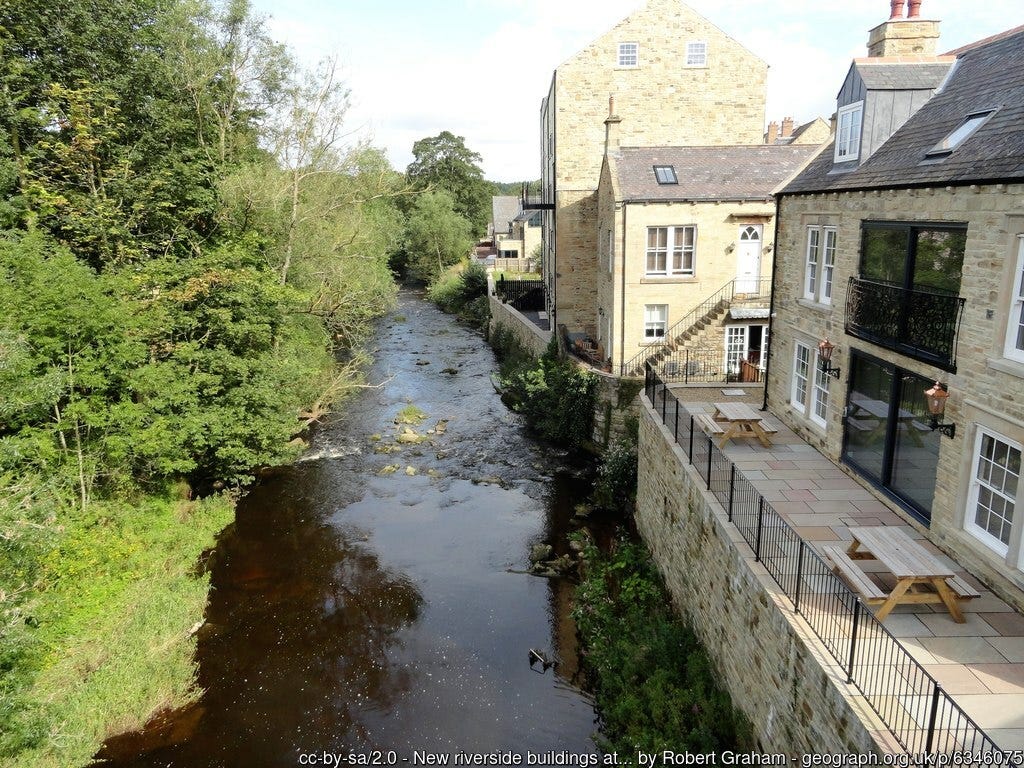
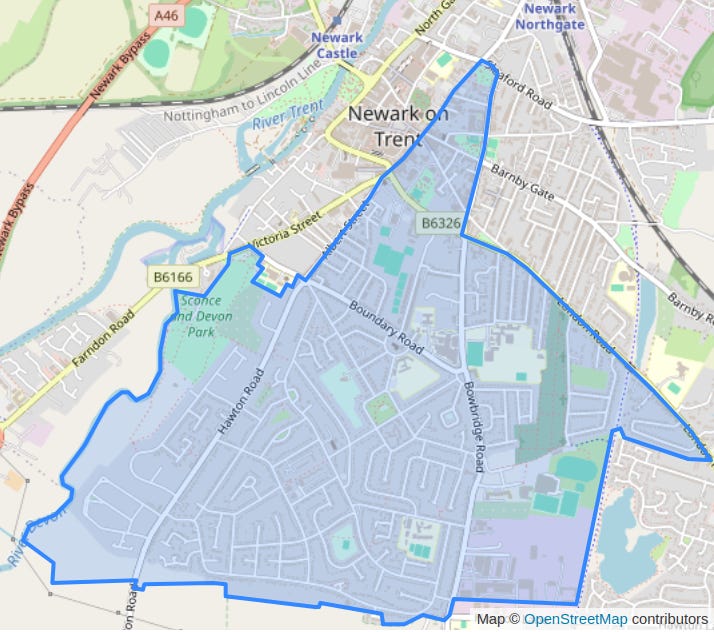
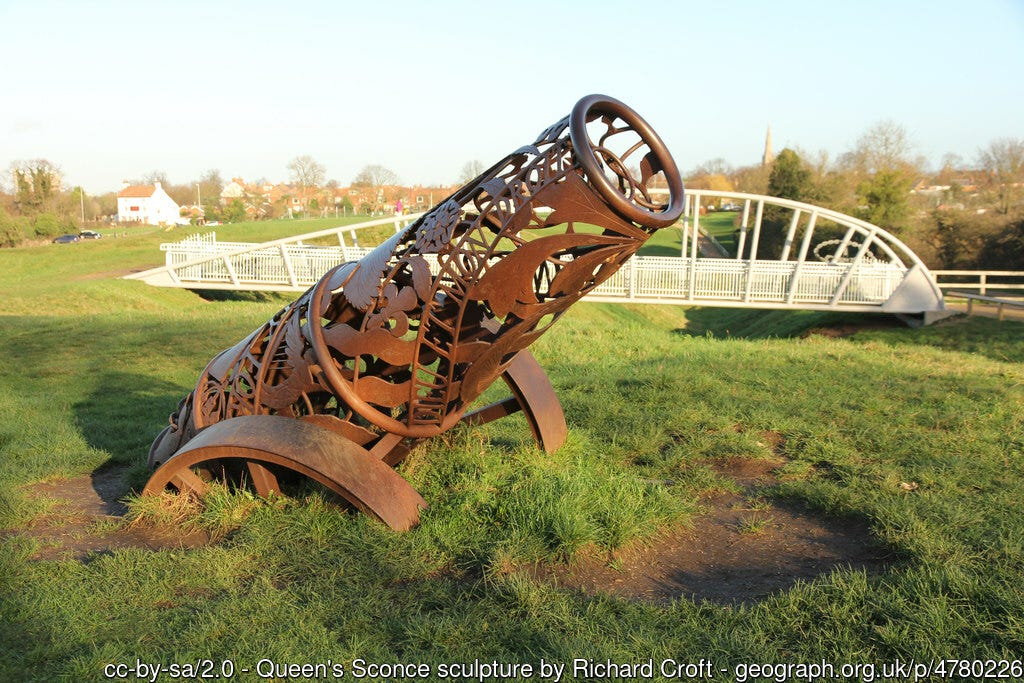


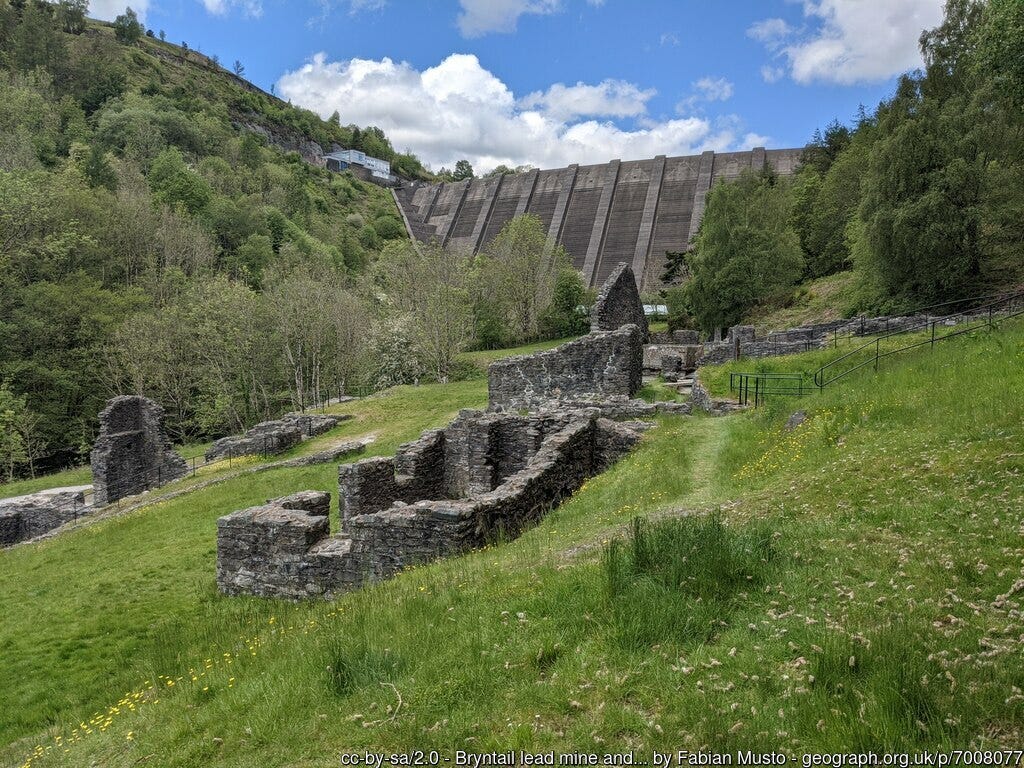




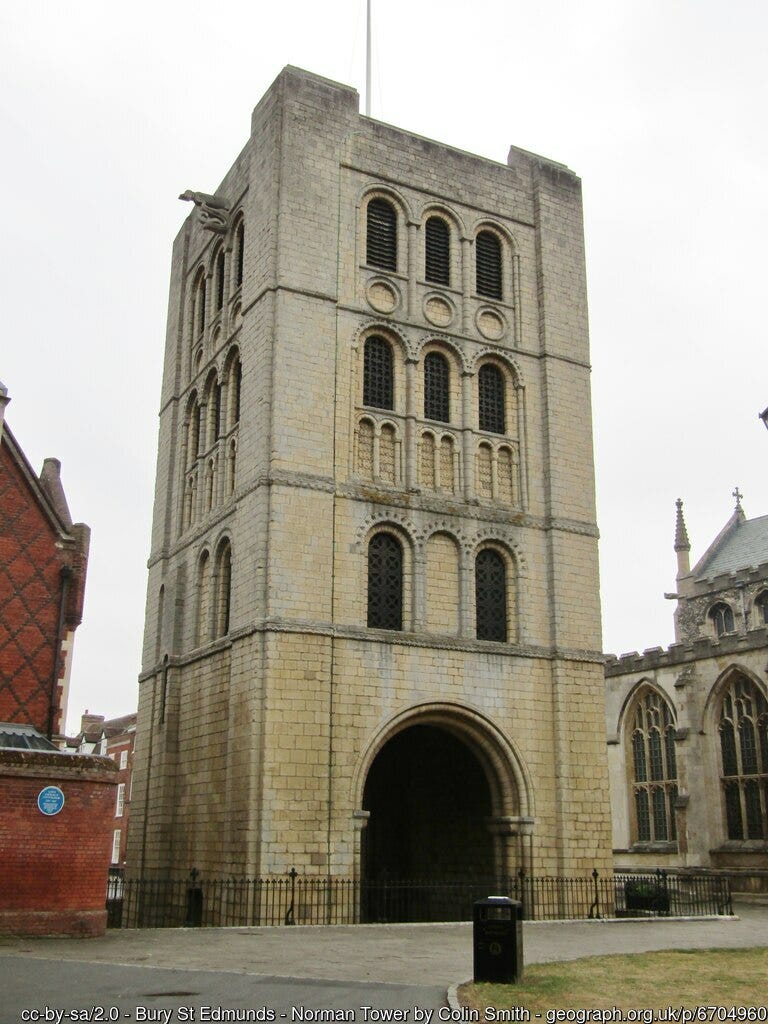
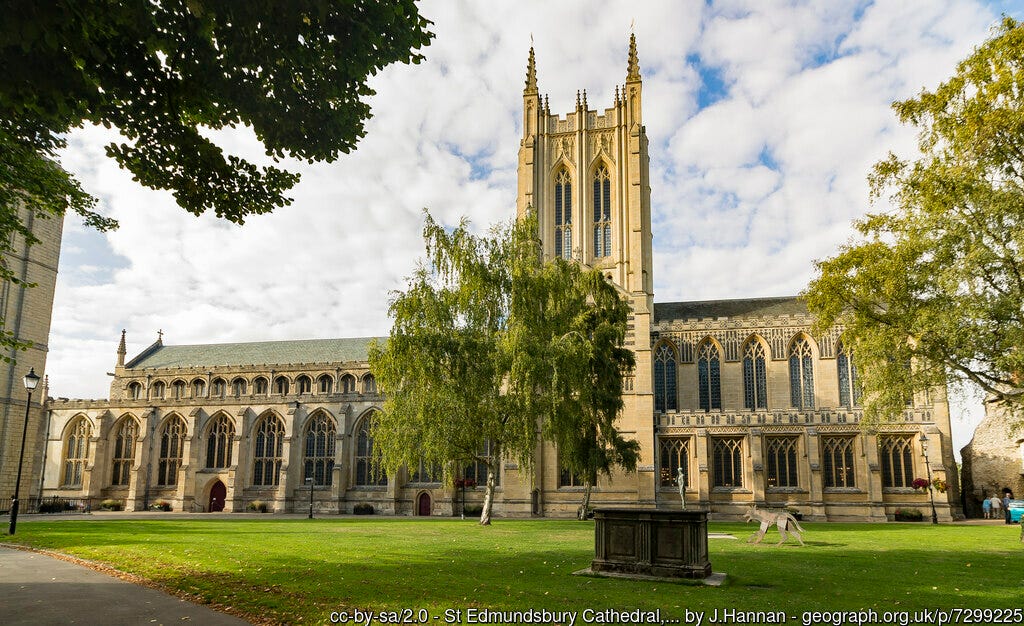


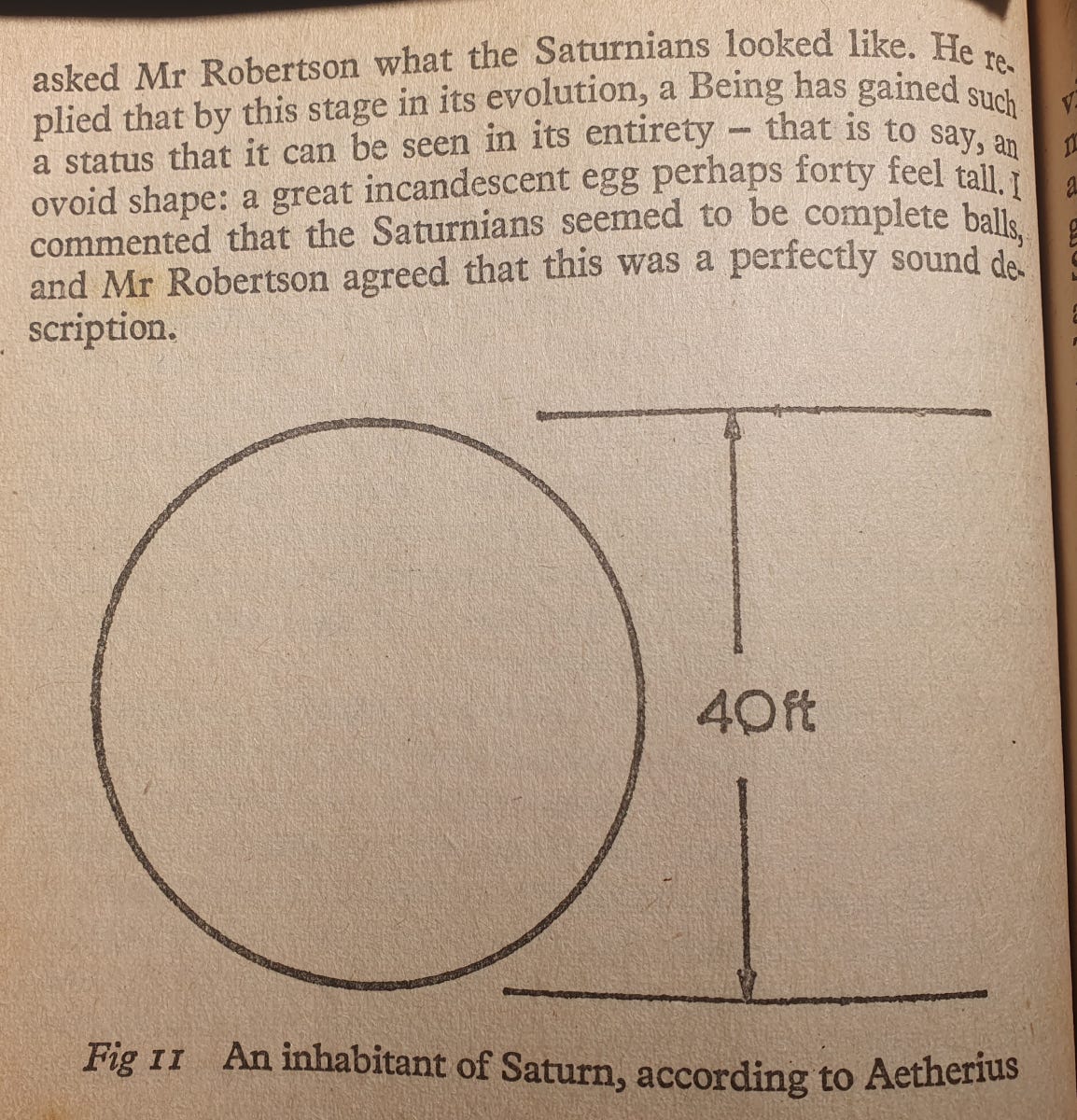

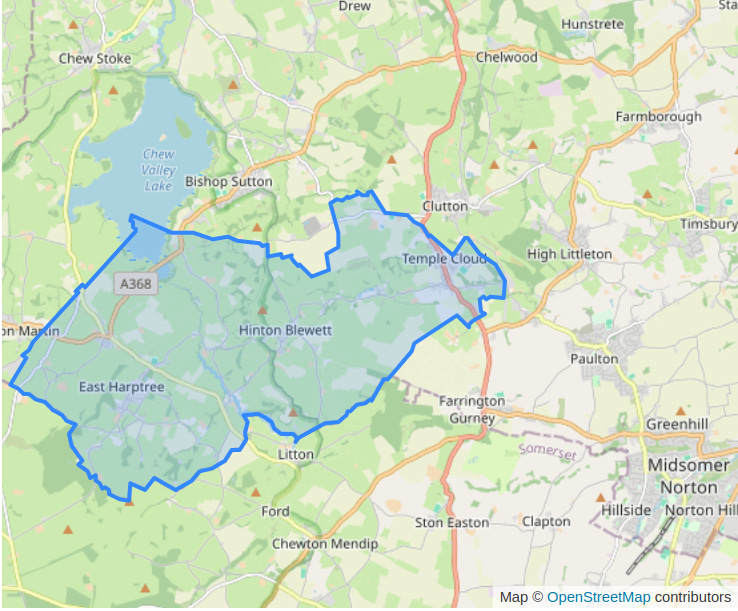
"That reorganisation had left Durham council as one of the UK's largest elected bodies, with 126 councillors up for election in 2021: only the House of Commons and the Scottish Parliament were larger."
Buckinghamshire had 147 members in 2021 so larger than both